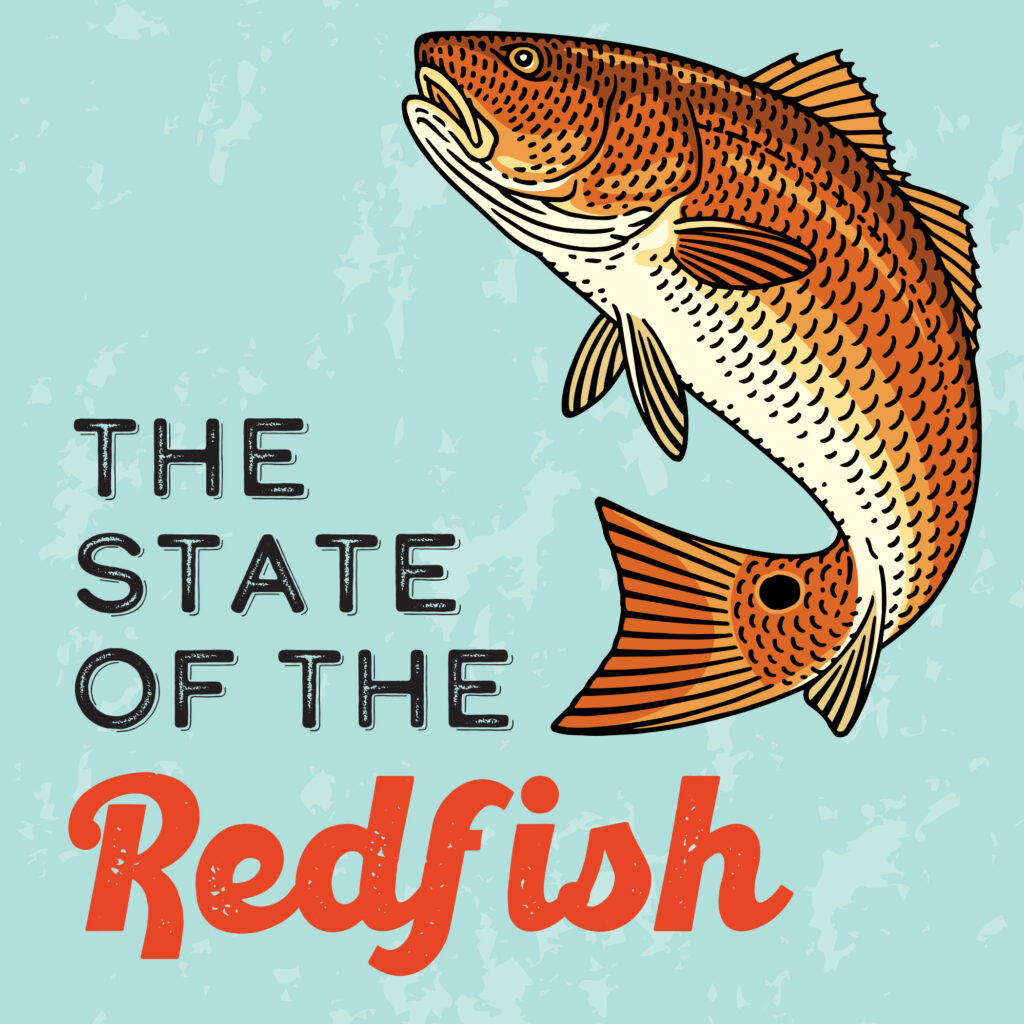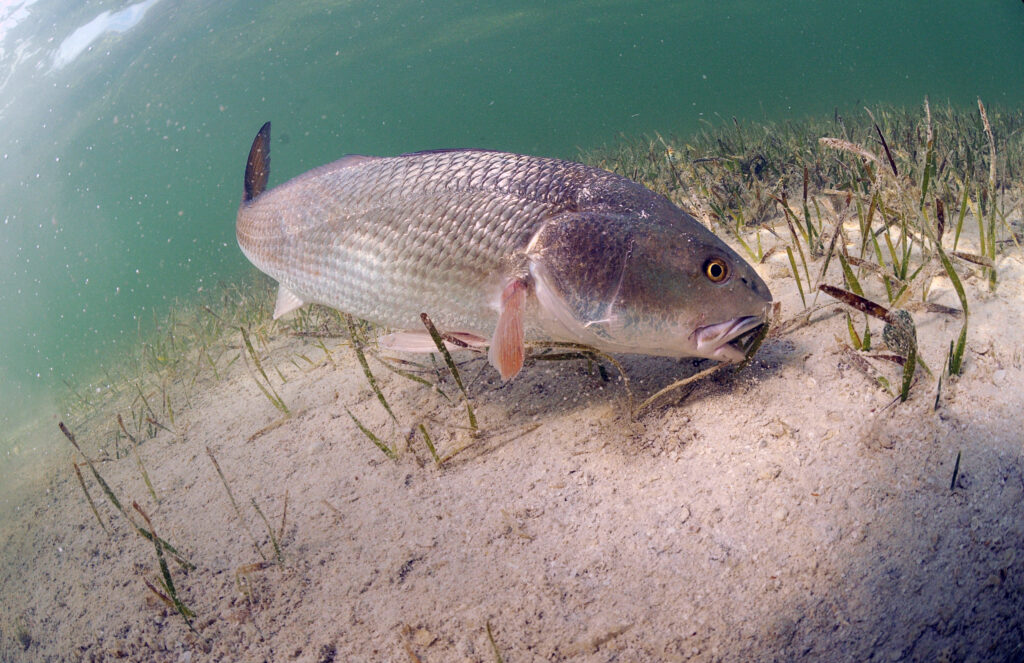A Florida Icon: Ocala hosts inaugural redfish summit


[Illustration by Ocala Gazette]
The inaugural daylong event, presented by the Florida Fish and Wildlife Conservation Commission, explored the status of the popular fish in Florida, its biology and management, and conservation efforts to restore and conserve its habitat.
The Coastal Conservation Association of Florida, the Sea and Shoreline Aquatic Restoration, the American Sportfishing Association and the Fish and Wildlife Foundation of Florida sponsored the 2021 Redfish Summit.
The event, held at the Hilton Ocala, was well attended for an inaugural event, said Amanda Nalley, a spokeswoman for the FWC.
“We had a good turnout of people that registered,” Nalley said. “It didn’t fill up quite as fast as the Snook Symposium did, but that symposium has been going on for seven years. And this is our first Redfish Summit ever.”
Redfish—also known as red drum, spot tail, red bass and channel bass—inhabit inshore and offshore waters along the Atlantic coast from Massachusetts to Key West and throughout the Gulf of Mexico.
In Florida waters, redfish can reach lengths up to 45 inches and weigh as much as 51 pounds. The game fish is extremely popular in Florida due to its ability to fight for extended periods and its taste when cooked, according to FWC’s website.
It’s also a fish found everywhere near shore in Florida.
“The thing about redfish is that it’s really a success story,” said Nalley. “A few years ago, it wasn’t doing very well. Now, it’s doing a lot better, and that’s why we’re here, to continue asking, ‘What do you want us to do with this fishery?’”
Nalley described the summit as a workshop. A collection of researchers, managers and concerned citizens gathering together in one spot to get a lay of the state as far as the redfish is concerned and help find solutions to big questions like stock decline.
Summit attendee Michael Rogar cares deeply about the health of the redfish population.
“I’m a professional guide and a redfish tour fisherman,” said Rogar. “So, I really care how they’re doing and want to learn more about them and what I can do to help.”
Nalley explained that overall, catch rates for redfish have increased. In a 2020 population assessment, FWC researchers noticed a small decline in juvenile fish in one southeast corner of Florida near Indian River Lagoon.
Since Florida estuaries are vital nursery grounds for redfish, the deterioration of water quality or the loss of suitable habitats can drastically affect the number of young redfish that survive into adulthood.
The decline in young redfish was one of the topics addressed during the summit.
“(The decline) is still above our threshold,” said Nalley. “But if it goes below that line, then it’s not sustainable. Across the state, it’s above that threshold, except in that southeast quadrant, which could be the result of many factors.”

Redfish swimming off the Florida coast.
Terry Williamson, an environmental specialist for Brevard County since 2015, attended the summit to learn more about how water-quality issues may be affecting redfish populations near him.
“When it comes to natural resources, we’re dealing with a lot of water-quality issues,” said Williamson. “So, I’m hoping to get a feel for what’s going on. Projections. Any little nugget that might help me.”
The FWC only requires a person to obtain a saltwater fishing license to catch redfish, unlike other species that require fish-specific licenses.
While overfishing is always a looming concern, red tide is a more immediate issue, Nalley said.
Red tides happen when algae grow out of control, known as algal blooms, producing toxins that kill fish and sicken people. The common name comes from the color of the algae.
The state’s Gulf Coast is particularly susceptible to blooms every summer.
“It’s definitely something we’re keeping our eyes out for,” said Nalley.
Due to the red tide issues, temporary redfish harvest regulations—as well as with snook and spotted seatrout—are currently in effect in all waters of Manatee County north of State Road 64, including all waters of the Braden River, and all tributaries of Manatee River, excluding all waters of Palma Sola Bay, till Oct. 11.
All waters of Hillsborough and Pinellas counties (excluding all waters of the Anclote River and its tributaries) are similarly regulated.
“That area has remained catch-and-release for redfish. And recently, red tide hit Tampa Bay, and we made that area catch-and-release as well,” Nalley said, adding they will meet on Oct. 6 and 7 to discuss the situation.
While red tide is a concern, it doesn’t seem to have affected the redfish population too much, though researchers are working with data from 2019.
“We’re trying to be precautious with these catch-and-release measures because of stock assessment uncertainty. To make sure that these very important fisheries are protected for the future,” Nalley said.
Cody Rubner, from Stuart, is involved in the recreational fishing industry on the manufacturing side and is starting his own guide business.
He understands the importance of Florida’s ecology to maintaining healthy redfish populations, as well as the power of his voice when attending summits like Tuesday’s.
“As an up-and-coming angler, I think it’s really important to be engaged with the redfish fishery and understand that I have a share and an impact on it,” Rubner said. “I want to be able to ask questions and figure out how I can be better and influence other people to be better too.”





